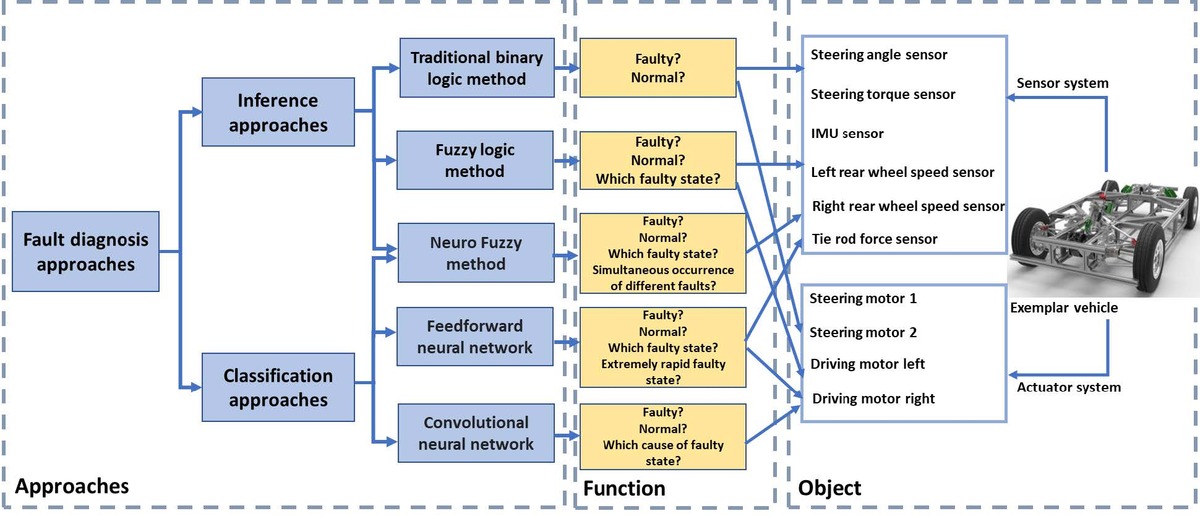Evaluation of Different Fault Diagnosis Methods and Their Applications in Vehicle Systems
- Autor:
-
Quelle:
Special Issue:
Advances in Fault Diagnosis and Anomaly DetectionMachines 2023, 11, 482
- Datum: 17.04.2023
Abstract
A high level of automation in vehicles is accompanied by a variety of sensors and actuators, whose malfunctions must be dealt with caution because they might cause serious driving safety hazards. Therefore, a robust and highly accurate fault detection and diagnosis system to monitor the operational states of vehicle systems is an indispensable prerequisite. In the area of fault diagnosis, numerous techniques have been studied, and each one has pros and cons. Selecting the best approach based on the requirements or usage scenarios will save much needless work. In this article, the authors examine some of the most common fault diagnosis methods for their applicability to automated vehicle systems: the traditional binary logic method, the fuzzy logic method, the fuzzy neural method, and two neural network methods (the feedforward neural network and the convolutional neural network). For each approach, the diagnosis algorithms for vehicle systems were modeled differently. The analysis of the detection capabilities and the suitable application scenarios of each fault diagnosis approach for vehicle systems, as well as recommendations for selecting different methods for various diagnosis needs, are also provided. In the future, this can serve as an effective guide for the selection of a suitable fault diagnosis approach based on the application scenarios for vehicle systems.

